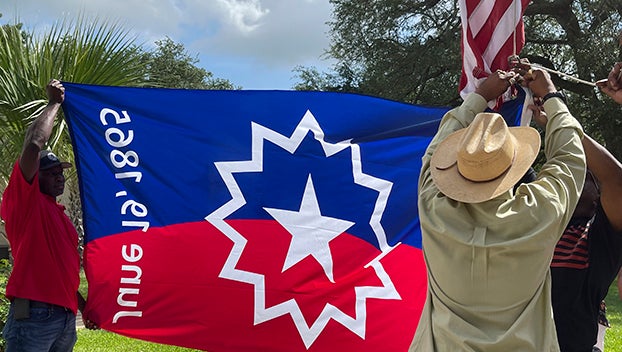McFaddin’s growth is treasure for Texas
Published 7:14 pm Wednesday, April 25, 2018
Transfer of 8,169 acres of wetlands from The Conservation Fund to the McFaddin National Wildlife Refuge provides a large piece of coastal puzzle to our state.
That’s good news for waterfowl, for threatened and endangered species, for avid hunters and for our own protection from storm surge and other, water-related dangers.
The acquisition for the McFaddin was announced Monday by The Conservation Fund, which initially acquired the acreage as part of its purchase of the 12,376-acre Sabine Ranch in the latter half of 2016. The Sabine Ranch was the last, unprotected portion of what was once the McFaddin Ranch, 106,000 Coastal Texas acres. By pieces, the private Conservation Fund, which bears the purpose of creating environmental solutions across America, is releasing the Sabine Ranch acres to the U.S. Fish and Wildlife Service, as it can afford to do so.
Over the past three-plus decades, The Conservation Fund has worked for the protection of 8 million acres of land in the U.S., including all 50 states, and 235,000 acres in Texas.
Here’s why the news matters so much for Texas, its coastline and its people: The Sabine Ranch acreage transfer represents some 13 square miles of imperiled coastal prairie and marshlands. The Conservation Fund describes the land as:
- Productive wintering waterfowl habitat
- Hurricane and storm surge buffer
- New recreational property
Consider the role the Sabine Ranch played during Hurricane and Tropical Storm Harvey in 2017: 12 billion gallons of water that fell on Houston was absorbed there. In an issued statement, The Conservation Fund cited this statistic from the federal government: An acre of wetlands “can absorb and store” more than a million gallons of floodwater.
Callie Easterly of The Conservation Fund said in its issued statement Monday, “Once in federal ownership, Sabine Ranch’s extensive wetlands will forever protect inland residents from hurricanes and storm surge, absorb floodwater, protect our coastal wildlife and filter fresh water as it runs into the Gulf of Mexico.”
Julie Shackelford, Texas programs director for the acquisition, said all of the 8,169 acres rest within Jefferson County, north of the Intracoastal Waterway. It is all coastal grasslands and freshwater marshlands.
It is property known well by hundreds of thousands of migratory birds along the Central Flyway, by threatened and endangered species such as the whooping crane, Sprague’s pipit, black rail and alligator snapping turtle, according to the issued statement.
Some 4,000 acres remain to be transferred, but it won’t happen on the cheap. What transferred most recently cost more than $20 million, including funds raised by duck stamps, and some $12 million is needed to transfer the remainder.
That provides local foundations, individuals and groups some sense of mission — it could be accomplished by next year — and it may protect us forever, as nature intended.




